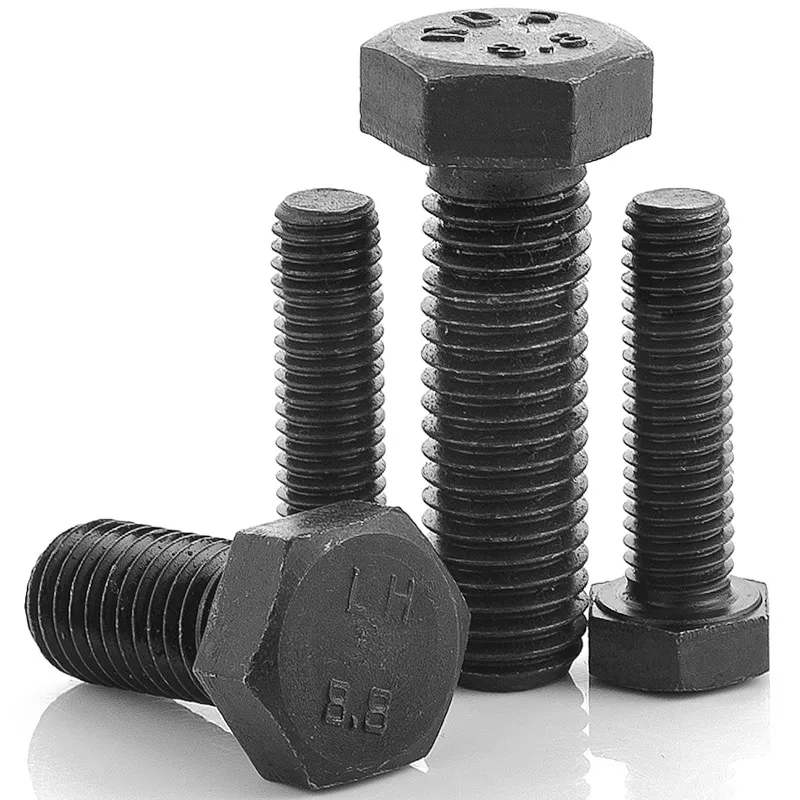

Benefits and Applications of Self Tapping Roofing Screws in Construction Projects
12月 . 04, 2024 06:32 Back to list
Benefits and Applications of Self Tapping Roofing Screws in Construction Projects
Understanding Self-Tapping Roofing Screws The Essential Fasteners for Your Roof
When it comes to constructing or repairing a roof, choosing the right type of fastener is crucial for ensuring durability and reliability over time. Among the various options available, self-tapping roofing screws stand out as one of the most effective solutions for securing roofing materials. This article will explore what self-tapping roofing screws are, their benefits, applications, and best practices for use.
What Are Self-Tapping Roofing Screws?
Self-tapping roofing screws are specially designed fasteners that can tap their own hole as they are driven into different materials, such as metal, wood, or composite materials. Unlike traditional screws that require a pre-drilled hole, self-tapping screws feature a sharp tip and threads that allow them to create their own hole. This makes them particularly useful for roofing applications where speed and efficiency are critical.
These screws are often coated with materials such as zinc or other corrosion-resistant finishes to enhance their longevity in outdoor environments. They come in a variety of sizes and shapes, with the most common being the hex washer head, which provides a larger surface area for better grip and load distribution.
Benefits of Self-Tapping Roofing Screws
1. Ease of Use One of the standout features of self-tapping roofing screws is their convenience. The ability to tap their own hole eliminates the need for pre-drilling, which not only saves time but also reduces the number of tools required on the job site.
2. Time Efficiency In construction projects, time is often of the essence. Using self-tapping screws can significantly speed up the installation process, allowing contractors to complete roofing jobs faster and more efficiently.
3. Strong Hold These screws are designed to create a tight fit, which helps in maintaining the structural integrity of the roofing system. The threads on self-tapping screws are engineered to provide maximum grip, ensuring that roofing materials are securely fastened.
4. Versatility Self-tapping roofing screws can be used with a range of roofing materials, including metal sheets, shingles, and tiles. This versatility makes them a go-to option for various roofing projects.
5. Corrosion Resistance Given their outdoor applications, self-tapping roofing screws are usually treated with coatings that protect them from rust and corrosion. This ensures that the fasteners remain intact and functional even in harsh weather conditions.
Applications of Self-Tapping Roofing Screws
self tapping roofing screws

Self-tapping roofing screws are used in a variety of roofing applications, including
- Metal Roofing These screws are ideal for securing metal roofing sheets to purlins or battens and can be used in both residential and commercial projects. - Roof Repairs When repairing roofs, self-tapping screws provide a quick solution for attaching new materials or reinforcing existing ones without requiring extensive preparation.
- Installations of Brackets and Flashing They can also be used to install brackets, flashing, or other accessories that need to be attached securely to the roof structure.
Best Practices for Using Self-Tapping Roofing Screws
While self-tapping roofing screws are relatively easy to use, following best practices will help maximize their effectiveness
1. Select the Right Size Choose a screw size appropriate for the thickness of the roofing material and the structure it will be attached to.
2. Use a Power Tool A power screwdriver or drill is highly recommended for driving self-tapping screws, as it allows for better control and reduces the risk of stripping the screw head.
3. Use the Correct Torque Setting Adjust the torque setting on your power tool to avoid over-tightening, which can lead to damage or deformation of the roofing material.
4. Inspect for Proper Sealing After installation, ensure that the screws have created a tight seal to prevent leaks. This is especially important in areas prone to heavy rain.
5. Regular Maintenance Periodically check the condition of the screws and the roofing material. Ensure that all screws remain tight and replace any that show signs of wear or corrosion.
Conclusion
Self-tapping roofing screws are an excellent choice for anyone involved in roofing construction or repair. Their ease of use, time-saving features, and strong hold make them indispensable tools in the roofing industry. By following best practices and selecting the right screws for your project, you can ensure that your roofing system is secure, reliable, and built to last. Whether you are a seasoned contractor or a DIY enthusiast, incorporating self-tapping roofing screws into your toolkit is a smart decision that will pay off in the long run.
Latest news
-
Hot Dip Galvanized Bolts - Hebei Longze | High Strength, Corrosion Resistance
NewsAug.01,2025
-
High-Strength Hot Dip Galvanized Bolts - LongZe | Corrosion Resistance, Custom Sizes
NewsAug.01,2025
-
Best Self Tapping Screws for Drywall - Fast & Secure Installation
NewsJul.31,2025
-
High-Strength Hot Dip Galvanized Bolts-Hebei Longze|Corrosion Resistance&Customization
NewsJul.31,2025
-
Hot Dip Galvanized Bolts-Hebei Longze Metal Products|Corrosion Resistance&High Strength
NewsJul.31,2025
-
Hot Dip Galvanized Bolts-About LongZe|High Strength, Corrosion Resistance
NewsJul.30,2025

